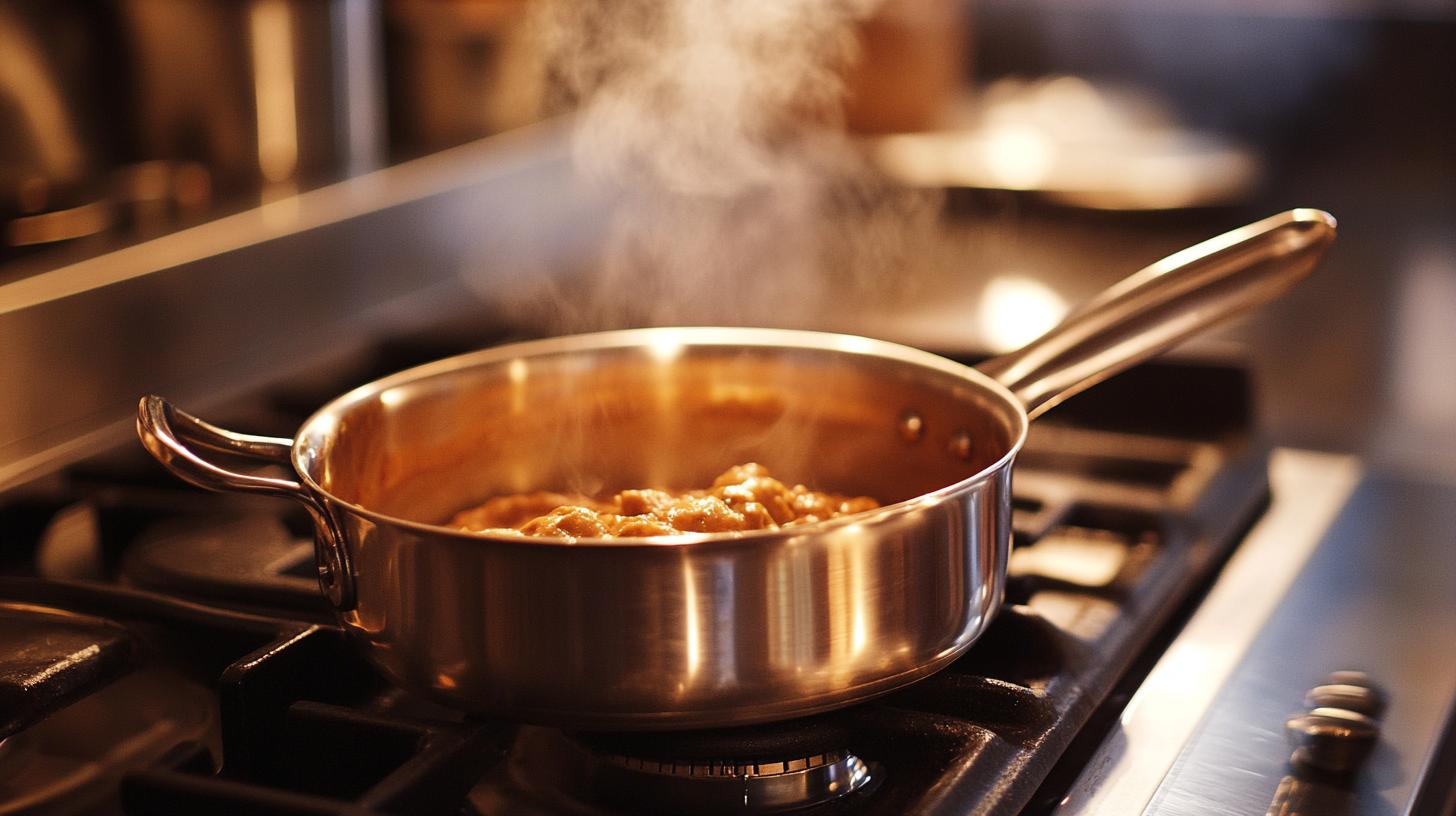Dive into the heavenly world of Classic Biff Stroganoff, where tender beef mingles with rich, creamy sauce infused with the earthy whispers of mushrooms and the gentle tang of mustard. Originating from the lavish kitchens of Imperial Russia, this dish embodies both opulence and homely warmth, making it perfect for a cozy family dinner or an intimate gathering with friends. Its unmistakable flavor profile—creamy yet piquant, hearty yet sophisticated—transforms simple ingredients into a symphony, offering sheer delight with every bite.
Ingredients:
– 500g beef tenderloin, thinly sliced into strips
– 2 tablespoons all-purpose flour
– 1 teaspoon paprika
– Salt and pepper, to taste
– 3 tablespoons sunflower oil or butter
– 1 large onion, finely chopped
– 2 garlic cloves, minced
– 200g mushrooms, sliced
– 150ml beef stock
– 2 tablespoons tomato paste
– 2 tablespoons Dijon mustard
– 150ml sour cream
– 1 tablespoon fresh parsley, chopped, for garnish
Instructions:
1. Marinate and Dust the Beef: In a large bowl, combine beef strips with a sprinkle of salt, pepper, and paprika. Lightly dust the beef with all-purpose flour, ensuring an even coat. This step creates a delicate crust when seared, which locks in juiciness and enhances flavor.
2. Sear the Beef: In a heavy pan, heat 2 tablespoons of oil or butter over medium-high heat. Add the beef in batches to avoid overcrowding. Sear until golden brown on all sides. Remove the beef from the pan and set aside.
3. Sauté the Aromatics: In the same pan, reduce the heat to medium and add the remaining tablespoon of oil or butter. Sauté the onion until transparent and luscious, then add the garlic and mushrooms. Stir until the mushrooms are soft and aromatic.
4. Create the Sauce: Pour in the beef stock, then add the tomato paste and mustard. Stir to combine, simmering until the mixture starts to thicken and bubble gently.
5. Combine and Simmer: Return the beef strips to the pan, ensuring they are well-coated with the sauce’s velvety embrace. Lower the heat and stir in the sour cream, bringing a rich, glossy finish to the dish. Cook gently for 5-10 minutes, allowing flavors to meld profoundly.
6. Final Touches: Sprinkle with fresh parsley, adding a pop of color and a hint of herbal freshness.
Cooking Tips:
– Use a tender cut like beef tenderloin or sirloin for the best results; tougher cuts can be used if cooked slowly until tender.
– If you prefer a thicker sauce, allow it to simmer uncovered for longer to reduce to your liking.
Serving Suggestions:
Serve your Classic Biff Stroganoff over a bed of fluffy rice or buttery mashed potatoes to soak up the savory sauce. Pair with a glass of robust red wine, such as a Cabernet Sauvignon or Merlot, to balance the dish’s creamy richness. For a complete meal, add a side of crisp green beans or a fresh garden salad.
Indulge in the timeless indulgence of Classic Biff Stroganoff—a dish woven through generations, bringing with it a taste of history and hearth to your table.
Secrets You Didn’t Know About Biff Stroganoff
Classic Biff Stroganoff is beloved worldwide for its luxurious flavors and rich history. But did you know that this dish’s origins are mired in interesting quirks and controversies? Here are some fascinating insights.
Unveiling a Russian Culinary Enigma
While the popular narrative attributes Biff Stroganoff to a prestigious Russian family, the origins of its name remain disputed. Was it Antonin Carême, a renowned French chef, who created it for Count Stroganov, or did it simply emerge from Russia’s home kitchens, catching on among the elite? This debate adds an enigmatic flair to the creamy delight.
Why Mustard and Sour Cream?
The blend of mustard and sour cream is not just for flavor. It’s a nod to Russian culinary traditions, where tangy elements like kvass and sour cream often balanced rich dishes. This marriage of ingredients is both a practical technique for cutting the heaviness of beef and cream and a reflection of historical tastes adapting through cultural influences.
Did You Know?
Interestingly, the evolution of Stroganoff parallels worldwide economic trends. During WWII, its recipes adapted to suit rationing: ground beef replaced tenderloin, and the inclusion of powdered ingredients helped extend the dish’s presence in Europe and the Americas.
For more culinary delights and historical recipes, explore Food Network and Bon Appétit. As you recreate this culinary masterpiece, remember you’re not just cooking a dish but tasting a slice of history. Bon appétit!













